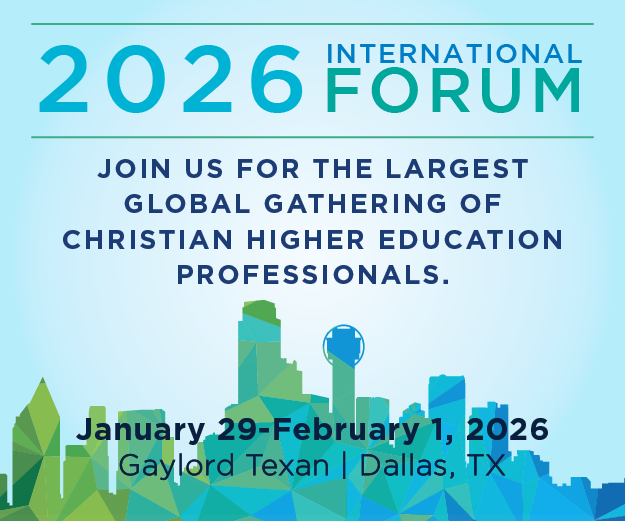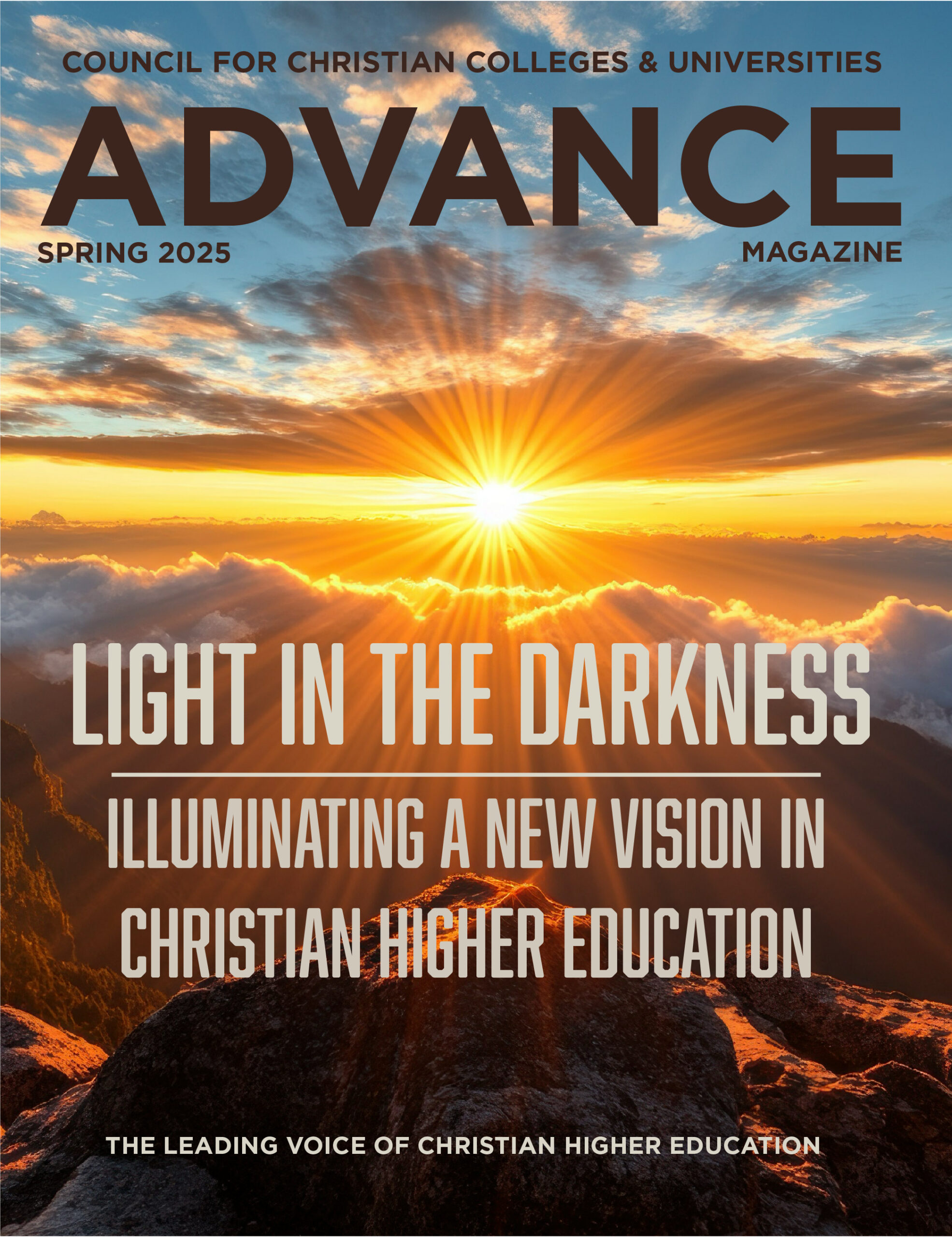Magazine

Editor’s Note: This essay originally appeared in the September 2023 issue of Deseret Magazine, which features discussions on how religious institutions can lead the way on restoring the broken promise of American education, and is reprinted with permission.
Education opens doors. Students who earn a college degree realize lifetime earnings nearly double those with only a high school degree. Educational attainment breaks cycles of intergenerational poverty. College graduates are 3.5 times less likely to be in poverty than those who stop at high school graduation. Education predicts social mobility, personal development, and civic engagement. This transformative impact on the lives of students is why so many dedicated professionals pursue educational careers.
Yet the promise of education is in peril, stemming from the interrelated crises of access, completion, and affordability.
Too many young people do not have access to education. According to the National Center for Education Statistics, barely 38% of 18- to 24-year-olds enroll in college. The crisis of access is a national phenomenon that spans racial backgrounds — white, Black, and Hispanic students all enroll at rates below 40 percent.
Completion statistics are more concerning. According to the Pell Institute, less than half of all college students complete a college degree. The data for students from the lowest income quartile is even more alarming. Less than 15% of low-income students who start college will complete college.
With low access and even lower attainment, the cost of a degree is coming under increased scrutiny from media, policymakers, and families. Only health care costs have increased as rapidly as education costs over the last two decades. Moreover, with easy access to credit, college debt has ballooned to $1.6 trillion with default rates predictably highest where completion rates are lowest — the “high debt, no degree” phenomenon.
Despite these challenges, a growing number of educational leaders are finding innovative ways to overcome the crises of access, completion, and affordability.
For example, professor Eric Bettinger at Stanford University has shown how mentoring programs can increase graduation rates. Tristan Denley in the Louisiana, Georgia, and Tennessee state educational systems has validated the idea of a “momentum year” where mentors, a graduation plan, and institutional connection increases retention. Pioneers like President Michael Crow at Arizona State University and President Scott Pulsipher at Western Governors University are innovating to lower costs and increase educational relevance. We applaud these innovators and hope others will build on their ideas.
Religious universities also can offer unique insights to contribute to battling these same challenges. Remarkably, some media and policymakers fail to recognize the impact of religious identity. At a recent editorial meeting highlighting religious universities, the response from one prominent education publication was: “We recognize some of your educational innovations, but we do not think they are tied to religious identity. They are simply evidence of good governance and talented people.”
In “Finding the Light: Restoring the Broken Promise of American Education,” the September issue of Deseret Magazine [where this essay first appeared], we hope to show that not only are religious schools innovating, but they are doing so because of their religious identity. Religious purpose can be the wellspring of innovation.
For people of faith, educational attainment is often seen as a religious responsibility. Tapping into that motivation can help bring the needed confidence and hope required to access education.
We have seen this in Hispanic educational communities who access a shared Catholic identity to reach out to at-risk populations. Many religiously focused historically Black colleges and universities, or HBCUs, draw on their Baptist or Methodist heritage to build connection and purpose with African American faith communities.
At Fresno Pacific University, a member of the Council for Christian Colleges & Universities, the Samaritan Leadership Program offers mentoring and academic opportunities for undocumented students in California. The program allows students to serve their campus and local community while completing their academic requirements under the university’s Mennonite Brethren Church denomination.
BYU-Pathway Worldwide was created as a solution for The Church of Jesus Christ of Latter-day Saints to deliberately open access to marginalized prospective college students by emphasizing divine potential and religious purpose. Since its creation in 2009, BYU-Pathway enrollment has grown to over 70,000 students with more than 70 percent of its students coming from low-income households.
In each of these examples, religious identity is a source of differential advantage in helping at-risk prospective college students find access to college education.
The pastoral care that religious institutions bring also offers unique opportunities to strengthen college completion rates. Rabbi Ari Berman, president of Yeshiva University, describes in his commentary in Deseret Magazine how the “covenant” relationship religious schools have with students can provide deeper connection than a more transactional “consumer” relationship.
In her essay in the Deseret Magazine collection, professor Ilana Horwitz at Tulane shows how religious identity can have a strong correlation with graduation rates. She and her Stanford co-author, professor Eric Bettinger, also suggest that religious identity can draw on religious volunteerism to support student mentoring efforts. In each of these examples, religious identity adds motivation for students, but it also opens access to a network of pastoral care.
Religious purpose also brings a call to care for the poor. This is manifest not only in needs-based scholarships, but also in cost innovations at religiously based universities. According to a 2018 study, 1 in 3 students attending a CCCU school are first generation, and 50% of students come from families making less than $50,000 annually.
CCCU member schools offer many options to assist these students. Spring Arbor University, the second-largest evangelical university in Michigan, announced the Spring Arbor Cougar Commitment in 2023, utilizing state and federal funding combined with Spring Arbor University grants and scholarships to offer free tuition to prospective students with the highest levels of need.
Similarly, Greenville University in Illinois offers the Illinois Allegiance, which highlights the institution’s commitment to providing the opportunity for a private Christian liberal arts education to students in Illinois with the greatest need.
Religious identity can also lead to cost innovations. When BYU-Idaho was created, one of its religiously inspired directives was to make quality education affordable to many more students. A unique university design was built on a three-track calendar system that allowed students to be admitted to one of three different calendar tracks, essentially serving 50% more students than traditional universities without raising proportional costs. The reason faculty supported a teaching emphasis with such direct religious oversight was specifically because they shared a spiritual commitment to make quality education more affordable.
In their essay in the collection, Ted Mitchell, president of the American Council on Education, and his colleague Gailda Davis state, “Religious colleges and universities can help the whole of higher education by adhering to the best versions of their authentic identity.” A striking finding of a national survey of higher education conducted for Deseret Magazine is that respondents don’t feel secular universities are supportive of religion. Ironically, the courage to hold to their religious identity is what makes faith-based universities such a unique national resource in the first place.
Rabbi Berman’s introductory essay to the Deseret Magazine collection reminds us that today’s youth are not facing a crisis of faith, but rather a crisis of meaning. As religious schools continue to embrace their unique ability to help students find spiritual meaning, they simultaneously support efforts to address the nation’s educational crises and help restore the promise of education.
Clark G. Gilbert is a General Authority Seventy for The Church of Jesus Christ of Latter-Day Saints. Shirley V. Hoogstra is president of the Council for Christian Colleges & Universities.



